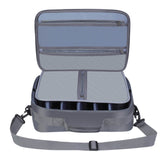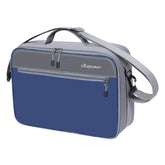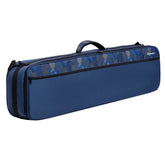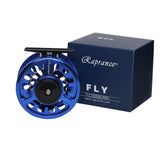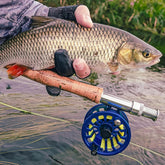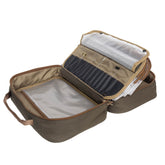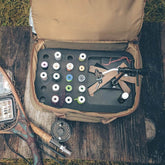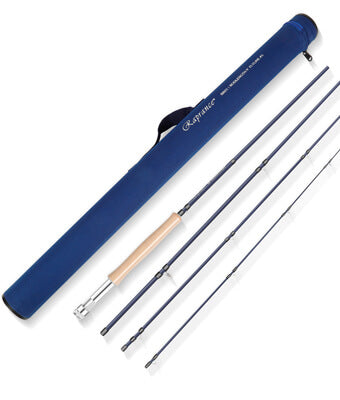Fishing Nets: A Guide to Dip, Hoop, Hand, and Rubber Mesh Options
When it comes to fishing, having the right net can significantly enhance the experience, whether for recreational or commercial purposes. Different types of fishing nets, such as dip nets, hoop nets, hand nets, and rubber mesh options, serve specific functions in both aquaculture operations and conservation efforts. Understanding these variations helps me choose the ideal net for catching fish effectively while adhering to sustainable practices.

Using the appropriate fishing net not only improves my catch rate but also ensures that I minimize harm to the fish populations. For instance, rubber mesh fishing nets are gentler on fish, reducing injury and promoting conservation. Exploring the distinctive features of each net type fuels my passion for fishing and reinforces my commitment to preserving aquatic ecosystems.
Ultimately, the choice of fishing net can dictate the success of my outing. By considering factors such as mesh type, net shape, and intended use, I can make informed decisions that align with both my fishing goals and conservation efforts.
Types of Fishing Nets
Fishing nets come in various types, each designed for specific functions and uses. Understanding the differences in design, materials, and functionality can enhance efficiency and effectiveness in fishing practices.
Dip Fishing Nets
Dip fishing nets are typically small and handheld, designed for swiftly scooping fish from the water's surface or shallow areas. The material often includes lightweight metal frames with mesh netting.
The mesh size is crucial, as finer mesh allows capturing smaller fish while coarser mesh is more suitable for larger species. Their compact design makes them highly portable, allowing for easy transport and storage while fishing.
These nets often feature a handle that can be adjustable or fixed, enhancing usability in various fishing scenarios. Dip nets are also popular for catch-and-release practices, ensuring minimal harm to fish during retrieval.
Hoop Fishing Nets
Hoop fishing nets consist of a circular frame usually made of flexible material, supporting mesh that forms a conical shape. Their design allows for effective trapping of fish.
The mesh size can vary, catering to different species. A smaller mesh size is preferred for smaller fish, whereas larger mesh works for bigger catches. These nets often feature a weighted bottom, ensuring they sink properly in the water.
Portability is a key feature, as many hoop nets collapse for easy transport. They are particularly useful in still or slow-moving waters, where fish can be lured into the opening for easy capture.
Hand Fishing Nets
Hand fishing nets are versatile tools designed for catching fish in various situations. Typically larger than dip nets, they often feature longer handles for reaching deeper waters.
Constructed from strong materials like nylon or durable mesh, they offer a balance of strength and resilience. The mesh size is adjustable, allowing me to choose the appropriate net for the fish being targeted.
These nets are generally portable, with many models designed to fold up for easy transport. Hand nets are invaluable for both casual and professional anglers, especially when targeting species in challenging environments.
Rubber Mesh Fishing Nets
Rubber mesh fishing nets are increasingly popular due to their unique construction. These nets feature rubberized material, reducing damage to fish during catch-and-release activities.
The design minimizes the likelihood of fish getting tangled, while also being less absorbent than traditional materials. This allows for easier cleaning and maintenance.
Rubber nets are typically available in various sizes, allowing for versatility across different fishing applications. Their portability remains a key advantage, as they can be folded or rolled for easy handling.
Selecting the Right Fishing Net
Choosing the right fishing net involves careful consideration of material, mesh size, size, portability, and design features. Each factor plays a vital role in ensuring the net meets my fishing needs effectively.
Material and Mesh Size Considerations
The material of the fishing net impacts durability and functionality. Common materials include nylon, which offers strength and resistance to wear, and rubber mesh, which is gentle on fish and aids in conservation.
Mesh size is equally important; finer mesh traps smaller fish and helps reduce bycatch. For larger species, a coarser mesh allows for efficient capture without harming the fish.
Key considerations include:
- Durability: Choose materials that withstand environmental elements.
- Conservation: Ensure mesh size allows for safe release of non-target species.
Size and Portability
The size of the fishing net should align with my preferred fishing style. A larger net may be suitable for boat fishing, while a compact option is ideal for wading in shallow waters.
Portability is crucial, especially for those who hike to remote fishing spots. A collapsible net or one that can be securely attached to my gear simplifies transport.
Consider these aspects:
- Storage: Look for nets that fold or collapse easily.
- Weight: Lighter nets enhance mobility without sacrificing function.
Design Features for Effective Use
Effective design features can significantly impact my fishing success. A net with a hoop design facilitates quick scooping, while a dip net is better for catching fish near the water's surface.
Comfortable handles enhance control and reduce fatigue during prolonged use. Additionally, features like an anti-tangle design help prevent snags, making retrieval smoother.
Important elements include:
- Handle Length: A longer handle increases reach.
- Grip Quality: A non-slip grip ensures safe handling.
By focusing on these aspects, I can select a fishing net that aligns with my requirements and enhances my fishing experience.
Fishing Nets in Practice

Fishing nets serve critical roles in various aspects of fishing, each designed with specific materials and mesh sizes to maximize efficiency and effectiveness. My focus will be on their deployment in commercial fishing, their enhancement of recreational fishing experiences, and their contributions to aquaculture operations.
Deployment in Commercial Fishing
In commercial fishing, choosing the right net is vital for success. I often utilize dip nets and hoop nets due to their effectiveness in capturing target species while minimizing bycatch.
Commercial nets vary in size and mesh design depending on the fish being targeted. For instance, larger fish may require nets with bigger mesh sizes for effective capture, while smaller species benefit from finer mesh designs.
The material of the net also plays a role in durability and maintenance. Many commercial nets are made from strong synthetic fibers that resist wear and tear in harsh marine conditions. Proper deployment techniques further enhance catch rates and ensure sustainable practices.
Enhancing Recreational Fishing Experience
For recreational fishing, the right net can significantly improve the experience. I prefer hand nets made from flexible, lightweight materials, allowing easy maneuvering in various water conditions.
Portability is another important factor for recreational anglers. A compact design makes it simple to transport nets to different fishing spots. Additionally, the mesh size needs to be appropriate for the species targeted, ensuring a successful catch without excessive struggles.
Features like rubberized coatings can enhance grip and reduce fish harm during handling. This attention to net design can turn an ordinary fishing trip into a more enjoyable and fruitful outing.
Contribution to Aquaculture Operations
Aquaculture operations rely heavily on specialized nets for breeding and harvesting fish. I regularly use mesh nets that facilitate water flow while keeping predators at bay.
The choice of mesh size is crucial, as it impacts the health and growth of the fish. Finer mesh can help prevent escape, while larger sizes promote better water circulation and oxygen levels.
In addition, the material choices for aquaculture nets often include durable fabrics that withstand constant exposure to water and sunlight. This durability supports long-term use, making them essential in managing fish populations effectively and sustainably.

